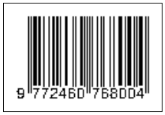Sistem Pengenal Isyarat Tangan Untuk Mengendalikan Gerakan Robot Beroda menggunakan Convolutional Neural Network
Habib Astari Adi(1*), Ika Candradewi(2)
(1) Program Studi Elektronika dan Instrumentasi, FMIPA, UGM, Yogyakarta
(2) Departemen Ilmu Komputer dan Elektronika, FMIPA UGM, Yogyakarta
(*) Corresponding Author
Abstract
Currently, Human and computer interaction is generally done using a remote control. This approach tends to be impractical for wheeled robot operation because it must always carry an intermediary tool during the operation. The application of hand gesture recognition using digital image processing techniques and machine learning in the control process of wheeled robots will facilitate the control of wheeled robots because control no longer requires an intermediary tool.
In this study, hand image taken using a camera then will be processed using a single board computer to be recognized. The results of recognized are passed on to arduino leonardo and DC motor to control twelve wheeled robot movement. The method used in this study is contrast stretching for preprocessing and Convolutional Neural Network (CNN) for hand recognition.
This method is tested with a variation of bright 26-140 lux, the distance from the face to the camera is 120-200cm. Hand recognition systems using this method resulting accuracy 97,5%, precision 97,57%, sensitivity 97.5%, spesificity 99,77 and f1 score 97.45%.
Keywords
Full Text:
PDFReferences
[1] J. S. Komputer, F. Ilmu, K. Univesitas, and S. Selatan, “SISTEM PENGENALAN GESTURE TANGAN UNTUK KENDALI GERAK MOBILE ROBOT,” pp. 151–156.
[2] Y. Wang, G. Song, Y. Zhang, and W. Wang, “Wheeled Robot Control Based on Gesture Recognition Using the Kinect Sensor,” no. December, 2013.
[3] A. A. Alani and G. Cosma, “Hand Gesture Recognition Using an Adapted Convolutional Neural Network with Data Augmentation,” 2018 4th Int. Conf. Inf. Manag., pp. 5–12, 2018.
[4] S. Hussain and R. Saxena, “Hand Gesture Recognition Using Deep Learning,” pp. 48–49, 2017.
[5] P. Xu, “A Real-time Hand Gesture Recognition and Human-Computer Interaction System,” pp. 1–8. 2017.
[6] P. S. Segmentation et al., “DeepUNet : A Deep Fully Convolutional Network for,” IEEE J. Sel. Top. Appl. Earth Obs. Remote Sens., vol. 11, no. 11, pp. 3954–3962, 2018.
[7] K. Kadir, M. K. Kamaruddin, H. Nasir, S. I. Safie, and Z. A. K. Bakti, “A comparative study between LBP and Haar-like features for Face Detection using OpenCV,” 2014 4th Int. Conf. Eng. Technol. Technopreneuship, ICE2T 2014, vol. 2014–Augus, pp. 335– 339, 2015 [Online]. Available: http://ieeexplore.ieee.org/document/7006273/ [Accessed: 29-Aug-2019]
[8] J. Chang-yeon, “Face Detection using LBP features,” Stanford.Edu, pp. 1–4, 2008 [Online]. Available: http://scholar.google.com/scholar?hl=en&btnG=Search&q=intitle :Face+Detection+using +LBP+features#0 [Accessed: 10-Jul-2019]
[9] J. L. F. C, E. G. C. A, and L. E. R, “Application of Convolutional Neural Networks for Static Hand Gestures Recognition Under Different Invariant Features,” pp. 5–8, 2017.
[10] S. Qin, X. Zhu, Y. Yang, Y. Jiang, “Real-time Hand Gesture Recognition from Depth Images Using Convex Shape Decomposition Method” Vol. 74 no. , pp. 47-58. January 2014 [Online]. Available: https://link.springer.com/article/10.1007/s11265-013-0778-7
Article Metrics
Refbacks
- There are currently no refbacks.
Copyright (c) 2019 IJEIS (Indonesian Journal of Electronics and Instrumentation Systems)

This work is licensed under a Creative Commons Attribution-ShareAlike 4.0 International License.
View My Stats1







